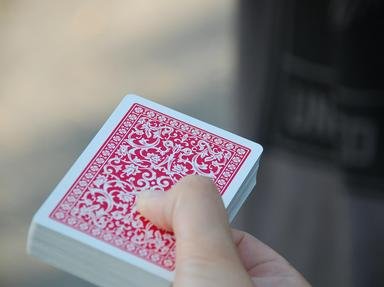Quiz Answer Key and Fun Facts
1. To play a card game, you'll of course need a deck. Which configuration would you use to play Skat?
2. Skat is of course the name of the game, but it also has a very specific meaning inside the game. What is "the Skat"?
3. There are three main official game types in Skat. Which is NOT one of them?
4. You have decided on a game to play and have figured out its base value. To find its final value, you need to consider a second factor. Which aspect of the cards you hold (including the Skat), is very important in this calculation?
5. Bidding in Skat is called "reizen" in German. Which of the following represents some possible bids by a player?
6. Apart from the jacks being trumps, you also need to remember the order of precedence of cards taking tricks. Which is the correct order, assuming a non-Null game?
7. Once the solo player has decided on the game to play, who will lead for the first trick?
8. Like in most trick-taking games, Skat requires players to follow suit (trumps being considered one suit - jacks included). If you are void in the suit played, however, what cards can you play?
9. Once all ten tricks are played, it's time to see who won the hand. In Null, this is easy - if the solo player takes a trick, they lose, if they take none, they win. How do you determine the winner in a suit or Grand game (with no special announcements)?
10. If you have a really good hand, there are several modifiers you could apply to your game to make it score more. Which is NOT one of them?
Source: Author
WesleyCrusher
This quiz was reviewed by FunTrivia editor
Bruyere before going online.
Any errors found in FunTrivia content are routinely corrected through our feedback system.
